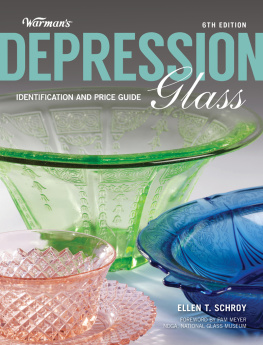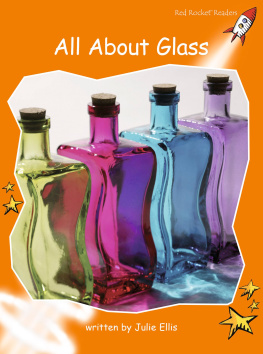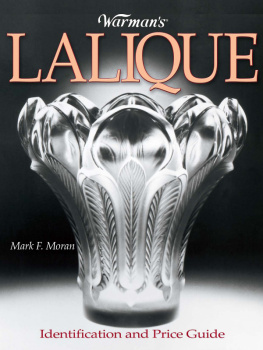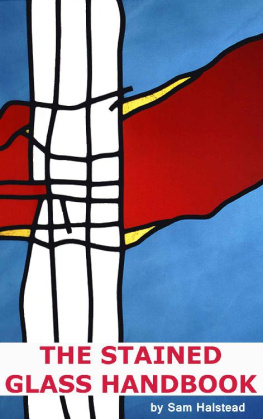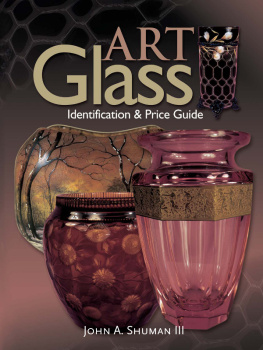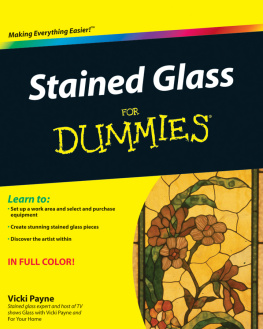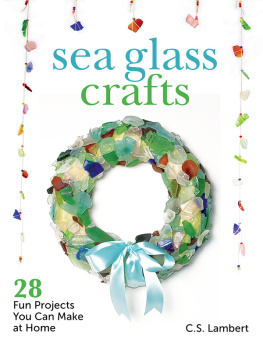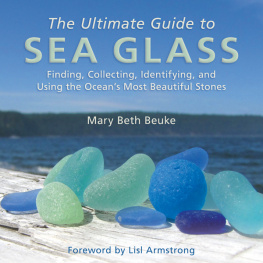WARMANS DEPRESSION GLASS
Identification and Price Guide
Ellen T. Schroy
Foreword by Pam Meyer
NDGA, National Glass Museum
CONTENTS
FOREWORD
When I think of Depression glass, I think of the kaleidoscope of colors and myriad patterns of American-made glassware of the Depression era. Once I started hunting for different patterns and pieces, I discovered much more than colors and patterns.
Learning about Depression glass is like taking a stroll back in time to the late 1920s and 1930s. When this beautiful, colorful glass was made, it was just the beginning. Most of the glassware produced prior to this time was mostly heavier glass, often just for table settings or as odd pieces. Then the means and machinery to mass-produce glassware was invented, and thousands of pieces were created on a daily basis.
Depression glass was used as premiums in cereal and detergent and was given away at movie theaters and gas stations. Advertisements from magazines and newspapers show sets being given away with the purchase of an appliance. Pieces were sold in variety stores for pennies so that homemakers could afford to add pieces to their sets. These dishes were used everyday, brightening the otherwise drab lives of folks struggling through the Great Depression. Today those premium pieces are highly sought after among collectors.
Another kind of glass, Elegant Depression, was also made during the Depression era. This glass is of better quality and took much longer to produce. The companies that made this glass had many employees who had to touch each piece. Unlike Depression glasswhich was poured into molds, popped out, and shippedElegant Depression had to have things like spouts and handles applied by hand. Many beautiful etched patterns had to be created and applied to the glass. This glass was sold in better department stores.
How do you learn more about the different glass companies, patterns, and styles of glass manufactured during this historic era? You can start by joining a Depression glass club where people meet to talk to and learn from one another. You can visit your local library where wonderful reference books like Warmans Depression Glass explain the history, show the patterns, and provide secondary market values of Depression glass.
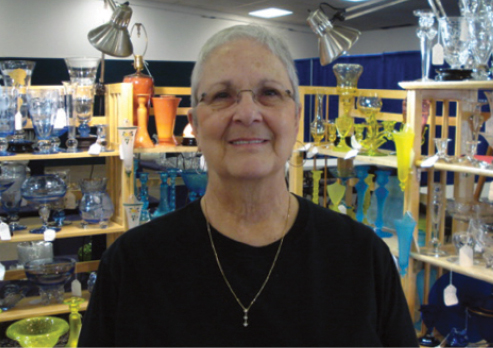
Another excellent resource is the National Depression Glass Association, www.NDGA.net, which provides information on clubs, its museum, annual convention, and much more.
You can also go to a museum to view a multitude of patterns in a rainbow of colors, as well as the actual tools used to produce these pieces and other glass made during the Depression. One such museum opened in Wellington, Kansas, in 2012. The NDGA National Glass Museum features glass from all glassmakers of the era.
There are other museums around the country that focus on individual glass companies, and they are wonderful, too. If you have an opportunity to visit a glass museum, take it! Learn about the era and the history behind the glass you love.
Remember to be careful around Depression glassfolks are easily bitten by the glass bug and there is no cure!
Pam Meyer, NDGA National Glass Museum and NDGA convention chairperson
INTRODUCTION
Welcome to Warmans Depression Glass, 6th Edition, the latest edition to the Warmans price guides series. This edition is designed to assist collectors, appraisers, auctioneers, and anyone trying to identify that special piece of heirloom Depression-era glassware. A selection of 170 of the most popular patterns of American glass dinnerware manufactured between the 1920s and 1970s is included. The sixth edition includes the standard Adam to Windsor patterns, plus more, including the patterns most eagerly sought after by the collectors of this colorful dinnerware.
Todays Depression-era glass collectors tend to follow decorating trends. This leads to selecting Depression glassware patterns that complement the currently trendy china patterns, ignoring the fancier patterns collectors sought in the 1950s and 1960s. Patterns such as Charm, Forest Green, and Royal Ruby, which feature square plates, bowls, and cups, look great with the square china plates that are popular now. Collectors are also more inspired with bright colors or crystal rather than the pinks and greens most often sought by earlier Depression-era glass collectors.
Each pattern featured in this book is represented by color photographs and line drawings to help with the identification process. A listing of known manufactured items and current prices assist in helping establish values. When known, the original manufacturers language has been used to identify the name of the piece. A glossary is included in this edition to help explain some of those terms. The pattern name listed is the one given by the manufacturer, except in the case of numbered patterns, which have now developed more easily recognizable names.
A shape library has been included to give you an idea of the myriad shapes in which plates were manufactured during this exciting period of American glassware production. A quick identification guide has also been developed, which sorts Depression-era glassware by motif, such as circles, fruits, florals, etc. By using this quick identification guide, readers may be able to discern the pattern they are trying to identify.
History
The history of Depression-era glassware is fascinating in that one must thoroughly investigate the histories of many American glass houses to more fully understand why this glassware captivates so many collectors. By exploring how these companies developed new patterns, new technologies, merged, and sold their wares, the story becomes clearer.
It is called Depression glass because collectors generally associate mass-produced glassware found in pink, yellow, crystal, or green with the years surrounding the Great Depression in America. Actually, the major manufacturers involved in making Depression-era glass, such as Federal, Hazel Atlas, and U.S. Glass, had established their businesses well before the Depression set in. In the case of U.S. Glass, the company formed a consortium of many smaller glasshouses in the late 1890s and combined factories, companies, and technologies for producing early American pattern glass. Later some of these factories went on to produce the glass patterns associated with the Depression era. The Tiffin Glass factory may owe its longevity to the fact that it was part of the U.S. Glass consortium during some difficult times and later survived again as an independent glass factory after the consortium was dismantled. Federal Glass Co. opened its Columbus, Ohio, plant in 1900. After switching to automation, it soon began production of tumblers and many Depression-era patterns, as well as restaurant wares, allowing diversification to get it through some difficult financial times. Collectors cannot easily pick a date and say this is when Depression-era glass started; rather, it was a gradual easing of the American glassware industry into modern mechanical advancements, allowing for the creation of inexpensive, quickly made colorful glassware.
The collectors of today have also expanded the number of patterns associated with Depression-era glassware. Patterns that were not yet designed when Hazel Marie Weatherman wrote her hobby-defining books are now quite popular with collectors. Fostorias American pattern was never considered in the Adam-to-Windsor core of patterns by early collectors. It was too fancy for them. Fostorias continual introduction of new forms over many years has created lots of wonderful pieces of American pattern to enjoy. Patterns such as Early American Prescut is gaining popularity by being easy to find and inexpensive enough to use frequently, something todays collectors love to do.

